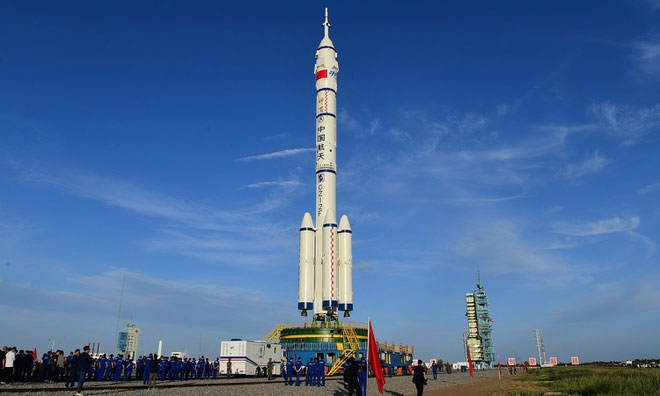The spacecraft is so large that it must be launched in separate parts and then assembled in space.
According to SCMP, the Chinese government is mobilizing scientists to participate in the construction of a giant spacecraft measuring 1km in length. It will be assembled from various parts, which will be launched separately into space.
The model of the giant spacecraft is outlined in documents from the National Natural Science Foundation of China. Accordingly, this agency is seeking designs to build a “super spacecraft” with a length of one kilometer, viewing it as a strategic asset for utilizing space resources in the future and for exploring the mysteries of the universe.

The Long March 2F rocket is commonly used to launch Chinese spacecraft into space. (Photo: Globaltimes).
This is an enormous size for a spacecraft. Therefore, it cannot be fully assembled on the ground and launched in one go. The initial design idea is to create separate modules, launch them individually, and then connect them once they are in orbit.
Researchers are tasked with finding ways to minimize the weight of the spacecraft to reduce the number of launches and construction costs. They must also ensure the ability to control the modules, limiting deviation, deformation, and vibration during assembly.
The design program for the super spacecraft in China spans five years. The leading agency will select the five most promising projects for further development, with funding of $2.3 million allocated for each project.
According to SCMP, this amount is merely the initial funding for researching the model. In reality, a spacecraft of such size will require significantly larger capital.
China has invested heavily in its space program over the past few years. In May, they launched a probe to Mars. Previously, in 2019, the country became the first nation to land and operate a rover in the Moon’s far side.
The plan to build its own space station was also initiated in April with the launch of the Tianhe module into orbit. This module serves as the core component of the Tiangong space station.
This project is set to be completed by 2022, realizing China’s ambition of creating a second space station, alongside the ISS. Once completed, Tiangong will have a T-shaped structure, weighing approximately 100 tons, consisting of a core and two experimental modules for astronauts and scientists to live and work in.





















































